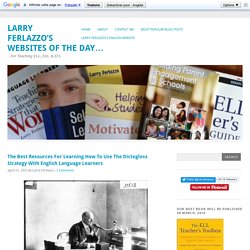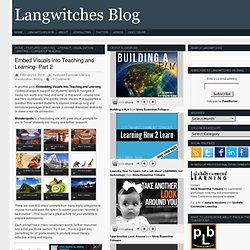Zoom
Trash

ESL Classroom Games, Running Dictation Games for Teaching Children. The Learning Network - The Learning Network Blog - NYTimes.com. By Jamie Keddie. Boggle's World: ESL Worksheets for Kids. Picture Descriptions Describing and Captioning Pictures Spot the Differences Story Questions Riddles Anagram Riddles Rhyming Riddles Word Morphs Homophones Word Skills Word Skills Cloze Activities Grammar Focus Grammar Practice Worksheets Quizzes Animal Quiz.

3rd Grade NONFICTION Readings. 3rd Grade Reading Comprehension Worksheet. To the moon 3rd grade comprehension - free eBooks download. Common Core Reading Comprehension Passages. Project GLAD Focus and Motivation Strategies: Observation Charts » Larry Linebaugh. Zero Noise Signal?

Check.Inquiry Charts? Check.Three Personal Standards? Check. What Project GLAD strategy to review today? Observation Charts. I learned that Observation Charts help students access background knowledge, promote academic discourse, and encite curiosity for your unit. Observation Charts are pretty straight forward. Send students out in pairs to write a comment, prediction, or question on each Observation Chart.
One example of a laminated Observation Chart, teacher added a separate peice of paper for students to write on. Give them plenty of time to work through each Observation Chart. Another example of an Observation Chart, this one has also been laminated. If your students are young, kinder or 1st grade, instead of writing full comments, predictions, or questions, students can draw symbols. Untitled Document. 3-Pictorial-Input-ChartComparative-Input-Chart-10-2-ragrj7. Glad_Resource_Book. The Best Resources For Learning How To Use The Dictogloss Strategy With English Language Learners.
Dictogloss is primarily a listening and writing activity used with English Language Learners.

It can certainly be done a number of different ways but, very simply-put, the teacher reads a short text, often one students are familiar with. Then, after the first time of just listening, the teacher reads it again and students write down notes of what they have heard. Next, the teacher reads it a third time and, again, the student writes down additional notes. The student then compares his/her notes with another student’s notes and they work together to develop an accurate reconstruction of the text — one that is not necessarily the exact wording, but that demonstrates its meaning accurately.
Finally, the teacher reads it again and students judge how well they did. Again, there are many variations on how to implement this engaging instructional strategy. Here are few of the best resources that I’ve found on using the dictogloss strategy. Embed Visuals into Teaching and Learning- Part 2 In another post, Embedding Visuals Into Teaching and Learning, I looked at ways to support our students’ ability to navigate a media rich world and “read and write” in that world.

I shared how teachers could easily and quickly create visuals, that supported a question they wanted students to explore, break up long and monotone passages of text, review a concept discussed abstractly or make a real life connection. Wonderopolis is a fascinating site with great visual prompts for you to “hook” students into inquiry and further research. There are over 800 visual prompts from many many categories to choose from and even the option to submit your own “wonder to be included”. (This could be a great activity for your students to prepare submissions) Each prompt has a video, vocabulary words, further resources and a Did you Know section. La Fuente - Information from Dual Language Education of New Mexico. Se le presentó a Evangelina Del Cid, la primera destinataria de la Janet Montoya Schoeppner Memorial Scholarship, su beca el 25 de abril, 2012, por la cantidad de $500.

Eva es una auxiliar docente en la escuela primaria East San José y actualmente asiste a New Mexico Highlands University en Rio Rancho y trabaja en su Licenciatura en Educación Bilingüe. ¡Mantén el buen trabajo Eva! Se están aceptando ahora las solicitudes para The Janet Montoya Schoeppner Memorial Scholarship para el semestre de verano 2012. La fecha límite es el 3 de junio, 2012. Para más información haga clic aquí para visitar nuestra página de internet. El Instituto de Verano de IRC y WIDA: Normas estatales “Common Core” y más para los educadores de estudiantes de idiomas.
SIOP Model: SIOP Model Lesson Plans. You have reached a page that has been moved, deleted, or is otherwise unavailable.

There are many ways to find the information you are looking for on the redesigned CAL Web site. Search: look for resources and information using CAL's search page. Site Map: Look at our site map to see the organization of information on our new Web site. Browse our Web site: Open the CAL home page www.cal.org and look for links to the information you want. Visit our archive: Many of our digests, online resource guides, and other resources have been saved in an archive on our redesigned Web site. Contact us: If you still cannot find what you’re looking for, please email us at info@cal.org. The Differentiator. Try Respondo!

→ ← Back to Byrdseed.com The Differentiator The Differentiator is based on Bloom's Taxonomy, Kaplan and Gould's Depth and Complexity, and David Chung's product menu. Try It In: French Dutch • Tweet It • Like Byrdseed • Pin It Students will judge the ethics of the [click to edit] using a textbook and create an essay in groups of three.